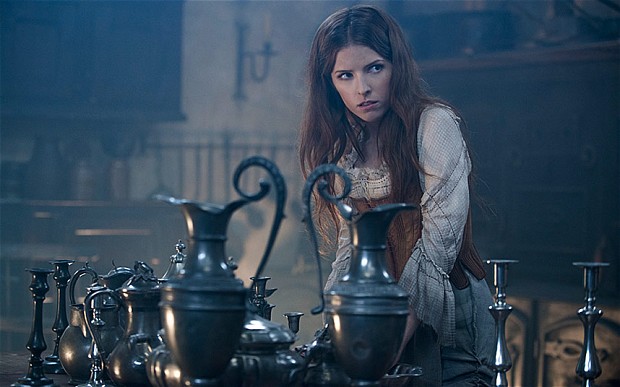 The Woman in Black
The Woman in Black
Written by Nigel Kneale, based on a novel by Susan Hill
Directed by Herbert Wise
Aired on ITV on December 24, 1989
My first memories of Susan Hill’s The Woman in Black were not from the long-running stage play nor the recent film starring Daniel Radcliffe. Instead, my first memories of the classic ghost story were through the TV spots for the UK adaptation that were so chilling, they caused many sleepless nights. 23 years later, it is now time to lay those ghosts to rest.
First broadcast on Christmas Eve, 1989, though rarely repeated since, The Woman in Black stars Adrian Rawlins as Arthur Kidd (the name was changed from Kipps for the adaptation), a young lawyer who is sent to the small town of Crythin Gifford to overlook the sale of Eel Marsh House after the recent death of its owner, Mrs. Drablow. Upon arriving in Crythin Gifford and attending Drablow’s funeral, he sees a mysterious woman dressed in black (Pauline Moran), which only serves as a prelude to several days of terror.
As far as gothic ghost stories go, The Woman in Black is one of the most enduring in popular culture and its simple plot and flexibility have allowed it to be effectively performed on both stage and screen. The TV adaptation shows audiences that even the most normal occurances are not what they seem. As Kidd travels to what appears to be a very simple town to take care of a grand-looking house, he seems almost oblivious to the locals’ reluctance regarding his sightings of the Woman in Black. Despite his insistence, they provide little insight into who this woman is, essentially implying that for their own sakes, they would rather not get involved in helping Kidd. This reluctance, not to mention the fear experienced by Kidd, also shows the power of a woman dressed in funeral attire. Set in an era where the paranormal was the only explanation for all things unknown, men trembling at the sight or even the mere idea of a ghost sounds cowardly. But the spirit of a vengeful woman who has a grudge to bear? You can practically call it old-fashioned feminism with a supernatural twist.
Rawlins plays Kidd brilliantly, effectively conveying skepticism, disbelief, and horror during his character’s gradual decline to insanity and fear. Moran is simply intense as the eponymous ghost. She is not the shrieking spectre of the 2012 version nor the lingering, mysterious presence of the play, but instead, she looks like a real living person, which makes her appearances all the more terrifying. She does nothing but gaze at Rawlins (barring one truly terrifying scene) with a look so malevolent that it is enough to make you run for the hills.
On the other hand, there is a notable lack of closure in the TV adaptation. While the 2012 film sees the young, brave Kipps attempt to lay the ghost to rest, Kidd allows his fear to overrule his health and leaves Crythin Gifford without resolving his legal case. This lack of closure doesn’t save Kidd however, as his encountering the malevolent Woman in Black once more is inevitable. While Herbert Wise’s adaptation is visually simple, his adaptation of The Woman in Black brings a genuinely spine-chilling TV experience. You have been warned.



